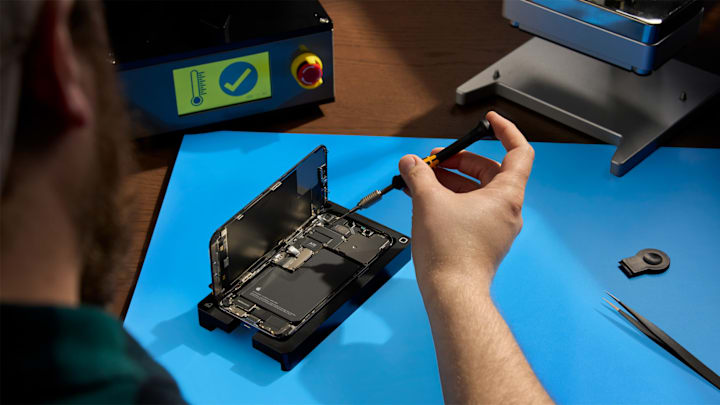With over 2 billion iPhones sold, Apple has managed to glue itself to the ears (and pockets) of consumers around the world. But the company has been notoriously fickle about service for the devices, insisting people bring their iPhones in for repair.
That’s changing this week: Apple has announced that its Self-Service Repair Store is now open for business, granting users the ability to service the phones on their own.
Here’s how it works. If your iPhone components (like the screen, battery, or camera) need replacing, you can read the repair manual online and then obtain both the part (with the corresponding IMEI number) and the necessary tool kit via the online store. The repair portal will request a six-digit code found in the manual to confirm you’ve read it.
The parts are purchased outright, while the repair tool kit can be rented for $49 weekly. Tools can also be purchased individually. Once you’ve completed the repair, you may need to run a System Configuration, which Apple will assist with via chat or telephone.
While the prices don’t vary all that much from having Apple carry out the fix at a service location, the defective parts can be returned to the company for a credit.
Take the iPhone 12 battery, for example. It runs $70.99. After receiving a $24.15 credit for the discarded battery, the net cost is $46.84
Not all repairs may require the tool kit, but when they do, prepare to have some help. The kit rental comes in two cases, which weigh 43 and 36 pounds, respectively. (Fortunately, they’re on wheels.) Shipping on the kit is free.
Apple cautions that the repairs should only be carried out by those experienced with electronic devices. Repair support is currently available for the iPhone 12 and iPhone 13, along with the 3rd generation iPhone SE. Apple plans to expand the self-service repair program to their Mac computers later in the year.
[h/t 9To5Mac.com]
